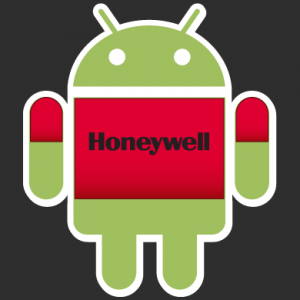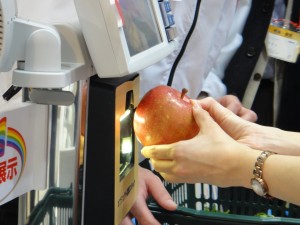Star Micronics’ Printers Certified with XERA POS Software
Three Printers Gain Certification from Aldelo
Star Micronics America, a leading worldwide manufacturer of point of service printers, has announced that three of their printers are now certified with Aldelo’s XERA POS.  After an extensive certification process, Aldelo has certified the TSP100, SP742 and SP500 point of service printers from Star Micronics.
Specifically designed for all fine dining, table service, and quick service operations, XERA POS is a hospitality point of sale software that embodies the latest user interface look and feel with intuitive screen workflow. The combination of the Star printer and Aldelo software is ideal for virtually any hospitality environment.
Star’s TSP100 is the first all-in-one receipt printer and offers a high throughput of 22 receipts per minute (RPM). The TSP100 is wall mountable to create more counter space and offers the revolutionary futurePRNT receipt design software.
Star’s leading impact printers, ideal for kitchen use have also been certified for XERA POS. The SP700 is an impact printer that is built specifically to work in environments where heat and humidity can erode the type on the kitchen order. It is a fast, two-color printer that offers crisp, easy to read type for quick viewing. In addition, Star’s legacy impact printer, the SP500 has also been certified. The SP500 is an excellent solution for food service and kitchen applications. It also boasts a high speed and can print 4.2lines per second at 40 columns.
CognitiveTPG Introduces the DLXi Desktop Thermal Label Printer
Same Rugged Reliability Now with Industry-Standard Interfaces
CognitiveTPG today announced the availability of its newest member of the desktop label printer line – the DLXi. The DLXi combines the legendary reliability of the Advantage LX and Blaster printer lines with the latest communication interfaces and performance. The DLXi is designed to operate in challenging environments while providing a seamless migration to the latest technology.
The DLXi carries on the tradition of metal frame construction and a metal print mechanism for the utmost in reliability backed with a 2-year warranty. However, it is the communication connector combinations that set this unit apart. The 4-inch print width model offers the most communication interfaces offered on a desktop printer platform (Serial, Parallel, Ethernet, USB-B and USB-A host).
VeriFone POS system compatible scanners
Thinking of adding scanning and category management to your operation? Your VeriFone POS system already has the software to scan PLUs and report sales. Because VeriFone POS systems are open, you can choose from a variety of scanners. Whether you need a high-tech 2D bar code scanner for scanning state licenses in conjunction with EASY ID or a basic 1D bar code scanner to move the lines, our partners have options that fit your needs and your wallet.
Benefits of opening your POS system to Scanning
- Start scanning immediately—no extra cost
- Ensure correct pricing every time—no lost profits
- Track sales down to the item level for better inventory control
- Speed customer throughput to increase repeat business
- Train new employees easily, resulting in less downtime
- Collect data accurately for analyzing fast/slow moving items
New Grocery Checkout Scanner Identifies Produce and Packaged Goods Without Barcodes
A new supermarket scanner from Toshiba Tec may make conventional barcode scanners in supermarkets unnecessary.
At most supermarkets a laser barcode scanner is used to read barcodes of packaging and produce stickers. The newly developed Object Recognition Scanner instantly recognizes merchandise directly by appearance with a camera, be it fresh produce or packaged goods.
Fruit and vegetables in supermarkets don’t usually have barcodes, because they’re put out while they’re fresh. So these items can’t be read at the register using barcodes, which means staff need to input data to record them. If staff are part-time
employees, they may not recognize some items, which can cause delays. We’re developing this new scanner to solve that problem.In this demo, there are three kinds of apples: Fuji, Jonagold, and Mutsu. The Fuji and Jonagold originally come from the same stock, so if you’re not really familiar with apples, they might look the same. But this scanner can distinguish them, by recognizing subtle differences in pattern and coloration.
This is an impressive technology, but definitely has limits. It is unlikely the technology can currently distinguish an expensive organic apple from its non-organic twin.
Sato acquires Argox
Sato, a manufacturer of barcode printing, labeling and EPC/RFID products, has acquired Argox Information Co Ltd, a supplier of barcode printers, barcode scanners and portable terminals, making Argox a member of the Sato Group of Companies.
Founded in 1996, Argox became one of the world’s leading design and manufacturers of low cost and entry level thermal printers. Argox has focused on China, Brazil and Turkey, and is today tracking to become a main provider of auto-ID technology in countries such as India, Russia and South Africa.
2-D Barcodes Can Automatically Update Electronics Health Records (EHRs)
Cook Children’s, Microsoft, Athenahealth, and drug makers Merck and Sanofi Pasteur develop system that allows smartphones to scan vaccine label information into e-health records.
A new 2-D barcode application developed through collaboration between Cook Children’s Health Care System, e-health record vendor Athenahealth, Microsoft, and two large drug makers can help clinicians and parents of pediatric patients to more easily manage vaccination information.
The system developed by Children’s Health Care System, AthenaHealth, Microsoft, and vaccine makers Sanofi Pasteur and Merck enables the nation’s first use of the 2-D barcodes on vaccines, allowing information about the drug to be automatically added to patients’ personal EHRs using 2D barcode scanners or smartphones.
The use of 2-D barcodes on vaccines is allowed under a recently published guidance from the U.S. Food and Drug Administration that exempts a requirement to use 1-D or linear barcodes on vaccines.
Honeywell Requests Input for Development of Android Mobile Computers
 Honeywell Scanning & Mobility recently announced the launch of its Honeywell Developer Program to give independent software vendors (ISVs) and end-users a voice in the development of Honeywell mobile computing products that will utilize the Android operating system. Through the program, participants will also have the opportunity to develop and test Android-specific applications on Honeywell’s newest mobile computer, prior to launch.
Honeywell Scanning & Mobility recently announced the launch of its Honeywell Developer Program to give independent software vendors (ISVs) and end-users a voice in the development of Honeywell mobile computing products that will utilize the Android operating system. Through the program, participants will also have the opportunity to develop and test Android-specific applications on Honeywell’s newest mobile computer, prior to launch.
LXE is now part of Honeywell
Acquisition is the third major auto-identification and data collection company to become part of Honeywell.
Honeywell announced that it has completed its acquisition of EMS Technologies, Inc., parent company of LXE.
EMS is a leading provider of connectivity solutions for mobile networking and rugged mobile computers.
The acquisition will enhance Honeywell’s existing capabilities in rugged mobile computing technologies. EMS’s Global Resource Management (GRM) division provides highly ruggedized mobile computing products and services for use in transportation, logistics, and workforce management settings as well as secure satellite-based asset tracking and messaging technology for search and rescue, warehousing, and field force automation environments.
“Acquiring EMS Technologies demonstrates our commitment to build on our leadership position in the global barcode scanning and mobility industry,†said Darius Adamczyk, president of Honeywell Scanning & Mobility. “By adding EMS Technologies to our business, we will acquire complementary rugged hand-held and vehicle-based products and expand our presence in warehousing, manufacturing and port segments. These new products and segments will be growth drivers for our business.â€
Honeywell Scanning & Mobility was formed in 2008, following Honeywell’s acquisition of two leading manufacturers of automatic identification and data collection (AIDC) solutions, Handheld Products and Metrologic Instruments.
Honeywell to Buy Parent Company of LXE
Honeywell today announced that it has signed a definitive agreement to acquire EMS Technologies, parent company of LXE, a leading provider of rugged mobile computers.
“EMS is a terrific addition to Honeywell, adding leading positions in attractive markets that are closely aligned with favorable trends in the growing Command, Control, Communications, Computers, Intelligence, Surveillance, and Reconnaissance (C4ISR) space and commercial aerospace, as well as being highly complementary to our existing Scanning and Mobility business,” said Honeywell Chairman and Chief Executive Officer Dave Cote. “Honeywell is uniquely positioned to acquire EMS due to the strategic fit across EMS’s Global Resource Management and Aviation divisions. The acquisition brings engineering expertise, differentiated technologies, global reach, and profitable adjacent segments that build upon our great positions in good industries and enhance our growth profile.”
EMS’s GRM division offers a broad range of solutions for supply chain logistics, mobile workforce management, and remote asset monitoring applications, supported by hundreds of partners worldwide. EMS’s proven mobile resource management solutions include LXE-branded rugged handheld and vehicle-mounted computers featuring multiple radio technologies and satellite-based global tracking and monitoring solutions for cargo, fleet assets, and personnel.
“This is another terrific transaction for our Scanning and Mobility business,” said Honeywell Automation and Control Solutions President and Chief Executive Officer Roger Fradin. “EMS strengthens our core mobile computing business and expands our addressable market with complementary new products, channel partners, and entry into the warehousing and port segments that we believe will be growth drivers for the business., This also represents an opportunity to demonstrate our proven acquisition integration process.”
Man Who Popularized UPC Barcode Passes Away at 81
Alan Haberman did not invent the universal product code (AKA UPC) barcode, but he is largely responsible for its selection over competing product marking standards decades ago.
His death, in Newton, Mass., was of complications of heart and lung disease, his family said.
Mr. Haberman led the industry committee that chose the bar code over other contenders — circles, bull’s-eyes and seemingly random agglomerations of dots — in 1973.
By all accounts, he spent years cajoling manufacturers, retailers and the public to accept the strange new symbol.
Source: Alan Haberman, Who Ushered In the Bar Code, Dies at 81





